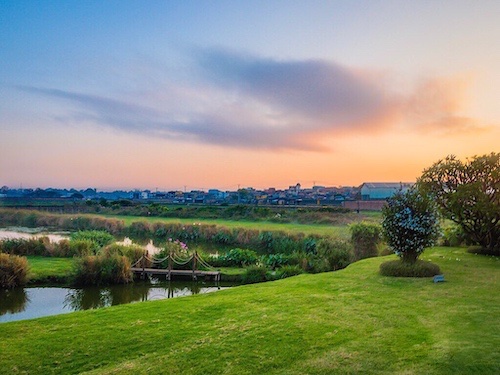
Antananarivo, called Tananarive in French and also known by its colonial shorthand form Tana, is the capital and largest city of Madagascar. The larger urban area surrounding the city, known as Antananarivo-Renivohitra (“Antananarivo-Mother Hill” or “Antananarivo-Capital”), is the capital of Analamanga region. The city is located 4,199 ft (1,280 m) above the sea level in the center of the island, and has been the island’s largest population center since at least the 18th century. Sadly Tana is not a city to visit, despite great natural beauty, crime due to extreme poverty, crowding and disease such as pneumatic plague make it inadvisable to walk without a professional escort, take a taxi or any public transportation and in reality, leave the safety of a reputable hotel. It is basically a place to stay until you leave for somewhere else, often on the single runway of the “International” airport. While we are on the subject, Taxibrousse is the famous French name for the Malagasy bush taxi, which is a kind of share taxi for overland drives. For most Malagasy people, these buses are the only opportunity to travel longer distances for affordable prices, and thus they are part of the Malagasy sense of life. They are also really unsafe since the driver and often the passengers will rob you of all your belongings. I was on a Natural Habitat tour and we stayed at the Hotel Tamboho, a beautiful little hotel on a private lake with a guarded little shopping enclosure including a modern supermarket.
The Rova of Antananarivo
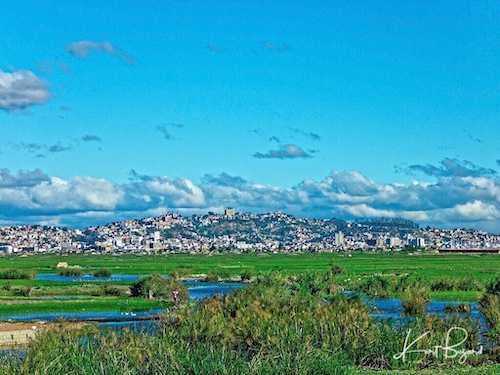
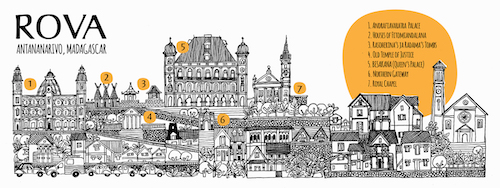
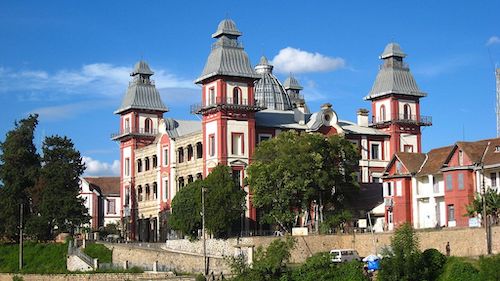
The Rova of Antananarivo is the royal palace complex (rova) in Madagascar that served as the home of the sovereigns of the Kingdom of Imerina in the 17th and 18th centuries, as well as of the rulers of the Kingdom of Madagascar in the 19th century. Its counterpart is the nearby fortified village of Ambohimanga, which served as the spiritual seat of the kingdom in contrast to the political significance of the Rova in the capital. Located in the central highland city of Antananarivo, the Rova occupies the highest point on Analamanga, formerly the highest of Antananarivo’s many hills. Merina King Andrianjaka, who ruled Imerina from around 1610 until 1630, is believed to have captured Analamanga from a Vazimba king around 1610 or 1625 and erected the site’s first fortified royal structure. Successive Merina kings continued to rule from the site until the fall of the monarchy in 1896, frequently restoring, modifying or adding royal structures within the compound to suit their needs. A fire on the night of 6 November 1995 destroyed or damaged all the structures within the Rova complex shortly before it was due to be inscribed on the list of UNESCO World Heritage Sites. it is being rebuilt as a museum. This is as close as I got, the area around the palace buildings are a frequent place for political demonstrations, pickpockets and thieves as is the area near the French consulate.
Tranovola
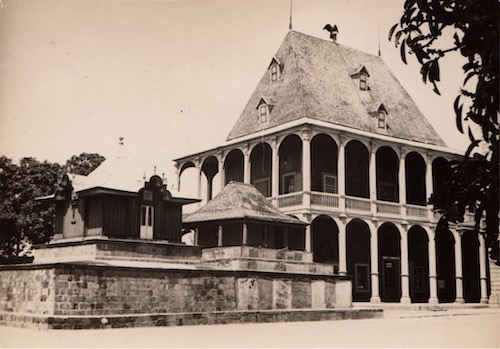
The neighboring Tranovola (“Silver House”), a smaller wooden palace constructed in 1819 by Creole trader Louis Gros for King Radama I, was the first multi-story building with verandas in the Rova. The origin of the name Tranovola, meaning “Silver House”, derives from the silver ornamentation used to decorate the exterior of the building. Sources have offered varying accounts of this silver decoration, including silver nails reportedly used to affix the roof, silver ornamentation on the window and door casings, tiny silver bells hung from the roof, and tiny mirrors embedded in the interior and exterior walls. The model offered by Tranovola transformed architecture throughout the highlands over the course of the 19th century, inspiring a widespread shift toward two-story houses with verandas. Due to the deterioration of the wood of the exterior balconies over time, Queen Ranavalona II commissioned James Cameron to reinforce and encase the original structure in a stone shell in 1867.
Bubonic Plague
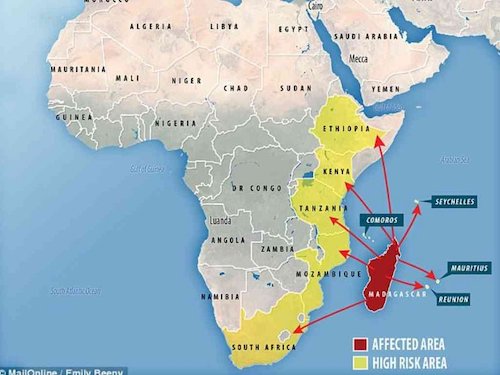
As if crime, poverty and overcrowding is not enough, Madagascar also suffers from yearly outbreaks of the plague. Unfortunately, the plague is still endemic in Madagascar. The cause of this sickness is the bacterium Yersinia pestis. Contrary to some newspaper headlines, the plague occurs every year on the island, normally in Northwestern Madagascar and always at the same time: In the beginning of the year. The reason for this burst is the mango and lychee harvest, which draws countless people into the plantations to earn money. Due to precarious hygienic circumstances of most villagers as well as arising harvest waste, rats and other rodents breed very well. Their fleas can transfer the plague via bite. Additionally, from 2013 to 2015 and in 2017, the situation got worse caused by some isolated cases of pneumonic plague, which can be transferred from human to human via droplet infection. The reality is that if you stay in a reputable hotel and avoid crowded venues your risk is negligible. I myself visited in 2017, during the height of the outbreak with no ill effects.
Flying into Tana

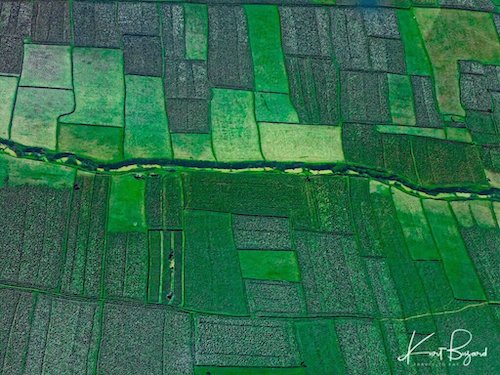
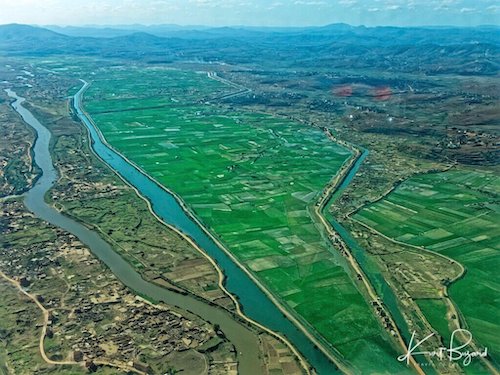

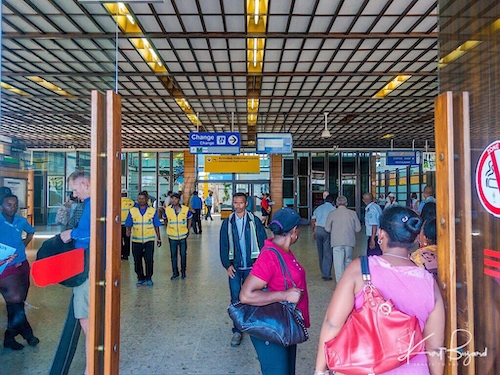
I guess I really didn’t know what to expect when I flew into Madagascar’s capital Antananarivo, but I certainly did not expect rice field almost to the horizon and the sun glinting off the water. Flying in from the deserts of Botswana this looked like tropical Southeast Asia rather than Madagascar. Ivato International Airport is the main airport of Madagascar, located about 10 miles (16km) from the center of Antananarivo. Ivato connects with major flight routes in Europe, Asia and Africa. Ivato’s international and domestic terminal are located next to each within two inter-connected buildings. Scheduled domestic flights to most major Madagascar Airports are served by Air Madagascar. Additionally, various small airstrips exists around the country which are not served by Air Madagascar but which offer landing possibilities with private air charters located to the side of the main building. The building is basically a large warehouse, filled with chaos and people. Since there is only a single runway, it really should not be that crowded but bureaucracy is alive and well in Madagascar. Change money in the airport if you can, banks and currency exchanges are both rare and a little dangerous in the city. Just a little note, if you go through customs on the way out, be sure to get snacks and food before, there are no shops in the small departure lounge. Don’t drink anything but bottled water or soda anywhere in Madagascar and don’t eat anywhere but reputable hotels. One final little travel note, buy Kleenex or toilet paper since most public toilets have none or at best the actual “bark of palms”.
The Beauty of Tana
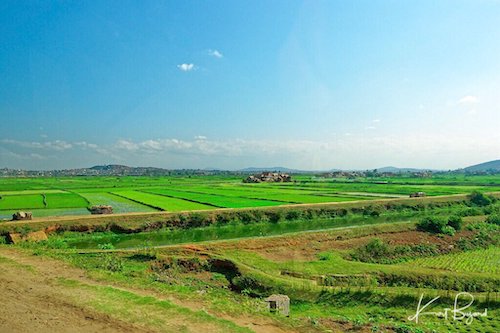
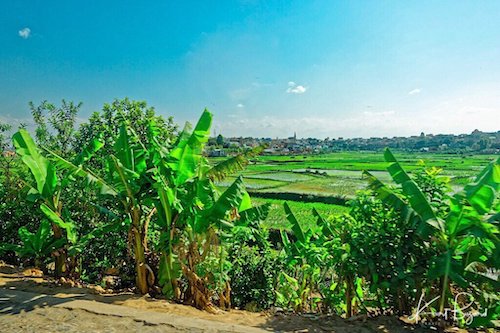
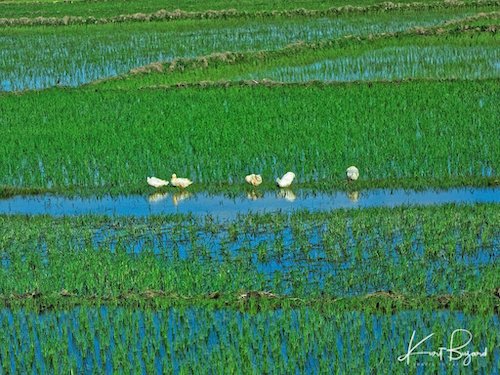

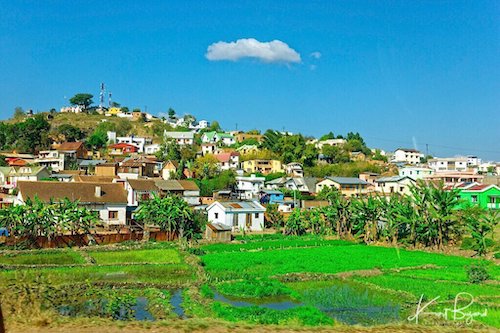
The staple food in Madagascar is rice, which is eaten with vegetables, beans, or meat. In fact, rice consumption per capita in Madagascar is the highest in the world. Many fruits and vegetables grow in Madagascar, and the coastal regions boast an abundance of delicious, inexpensive tropical fruit and seafood. The ride to the hotel will be a little long since it is about 10 miles to the city proper and the traffic is terrible but this will give you an opportunity to see the beauty of the ricefields first hand. The city’s neighborhoods emerge from historic ethnic, religious and caste divisions. The assignment of certain neighborhoods to particular noble sub-castes under the Kingdom of Imerina established divisions; the highest ranking nobles were typically assigned to neighborhoods closest to the royal palace and were required to live in higher elevation portions of the city. During and after French colonization, expansion of the city continued to reflect these divisions. Under the Kingdom of Madagascar, the commoner class (hova) settled at the periphery of the noble districts, gradually spreading along the slopes of the lower hills during the late 19th century. This ville moyenne became increasingly populous under French colonial authority, which targeted them for redesign and development. Since pre-colonial times the lower classes, including those descended from the slave class (andevo) and rural migrants, have occupied the flood-prone lower districts bordering the Betsimitatatra rice fields to the west of the city.
Hotel Tamboho
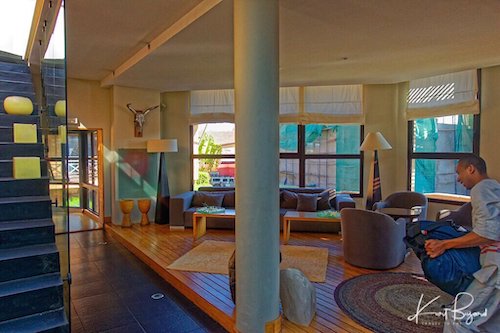
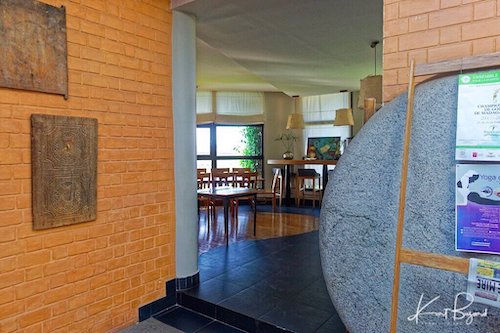
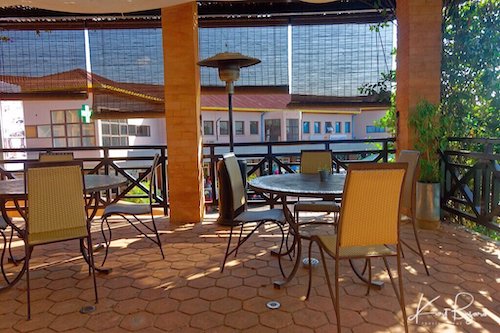
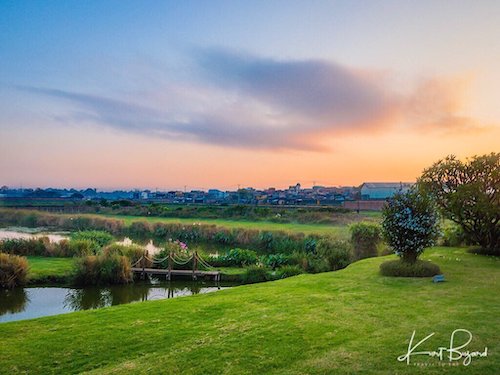

This 30-room boutique hotel offers convenient proximity to Madagascar’s capital while providing a haven of peace, quiet and privacy on the green banks of a small lake not far from the city center. Hotel Tamboho combines traditional Malagasy architectural touches with modern and comfort, incorporating natural materials into the design including stone, wood, iron, aluminum and raffia. Spacious and bright guest rooms feature light wood and bamboo flooring, air conditioning, flat screen satellite TV, free Wi-Fi, safe, and facilities for making hot drinks. The restaurant on site offers creative Malagasy cooking and enjoys shaded terrace views across the lake, while the tea garden offers a serene setting for drinks. A heated swimming pool and massage therapy services are also available.
Utilities in Madagascar
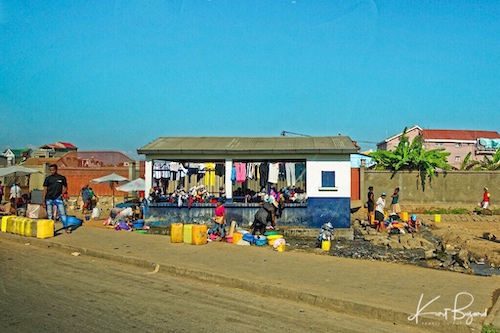

Madagascar’s water is not safe to drink from the taps anywhere in the country – including the most expensive hotels. Bottled water is available throughout the country. If you can get clear water from a tap or well, water-purifying tablets are a good option. Although it’s not inevitable that you will get diarrhea while travelling in Madagascar, it’s certainly very likely. Diarrhea is the most common travel-related illness: figures suggest that at least half of all travellers to Africa will get diarrhea at some stage. Take my advice and drink a shot of scotch or a couple of glasses of wine or beer with every meal. Antananarivo is Madagascar’s capital city and home to just under 1.5 million people. Around a third of these live in informal settlements, most in low income communities. Over 700,000 people have no access to safe and affordable water, and more than one million have to rely on poorly maintained toilets. Running water was installed in fewer than 25 percent of homes, small restaurants and businesses in 2007, necessitating the collection of water from household wells or neighborhood pumps and the use of outdoor pit toilets detached from the main building. In 2007, 60 percent of households were using shared public latrines. The largest problem in this city is the water sanitation. Only 69% of households in the city have access to proper sanitation facilities. Water in the city of Antananarivo has become the major transporter of disease, such as diarrhea, which is the 5th largest killer, for its inhabitants.
Laundry


There are practical difficulties involved with no running water and intermittent or no electricity. I have no idea why a system of communal clotheslines is not in place, it seems that the practice of drying clothes on any available open ground is considered good enough. The rational of cleaning clothes and then laying them on the ground to dry is a little outside my comprehension. Because open land is limited in the city, the poor often use the Taxibrousse to go outside Tana to do laundry and obtain charcoal for the coming week. It is a common sight, just outside the city to see laundry being done and drying on the dirt, especially on the weekend.
Charcoal
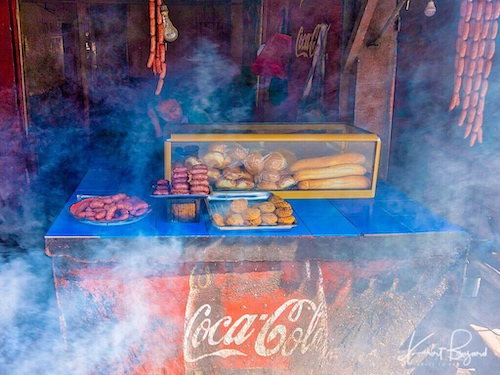
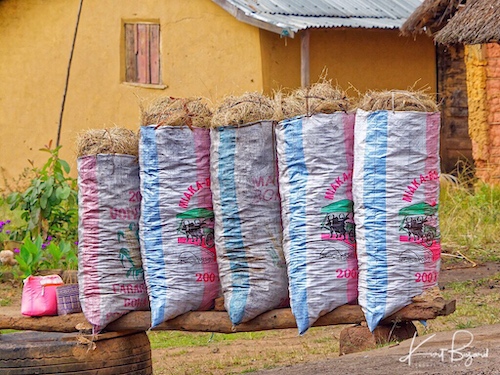
In Madagascar, charcoal provides nearly 90% of the energy used for cooking in urban households. Energy policies must balance forest ecosystem protection with meeting peoples’ daily energy needs. Specifically, this requires sustainable management of forests that are tapped for charcoal production, the organization of supply chains while, indirectly, fighting poverty since the charcoal business provides essential supplementary income for thousands of producers. In practice, this involves replanting primary forests with eucalyptus trees which grow more quickly but denies the lemurs and chameleons the primary forests in which they thrive. Most homes use charcoal for daily cooking; stocks of charcoal and rice are kept in the kitchen. The average city household spends just under half of its budget on food. Owing to its increasingly high cost, consumption of meat by city residents has sharply declined since the 1970s; the urban poor eat meat on holidays only once or twice a year. In 2007, two thirds of Antananarivo residents had access to electricity, while only ten percent of households owned a scooter, car or other motor vehicle. Unfortunately the electric system is unreliable and power outages are common.
Commerce in Antananarivo


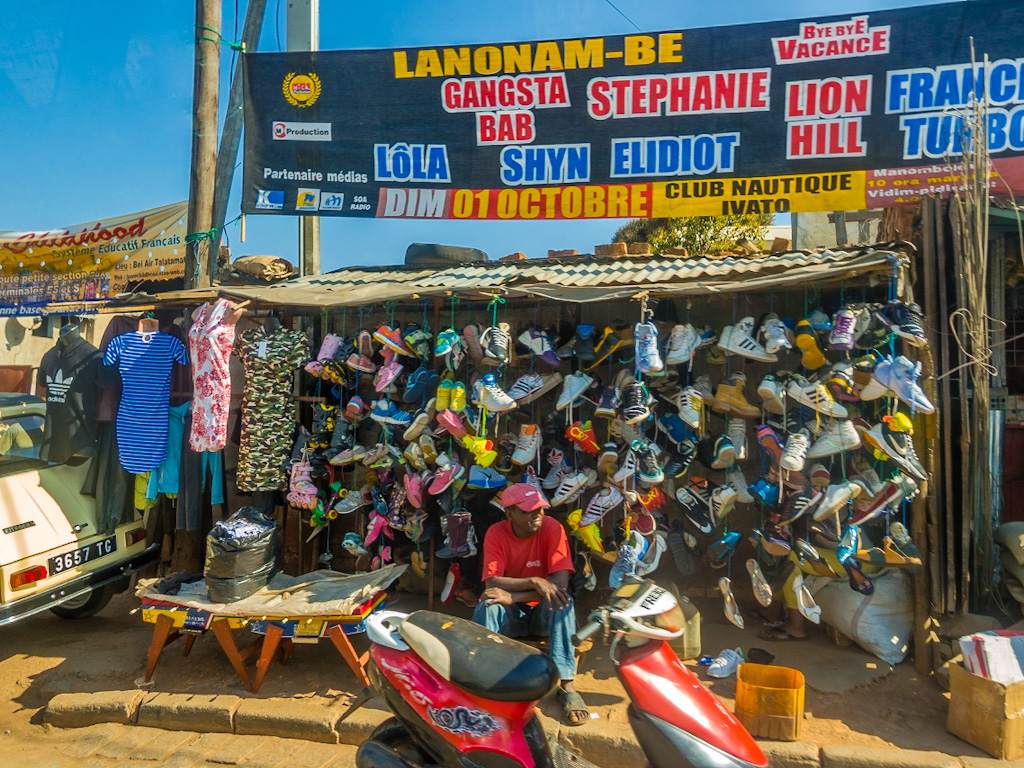
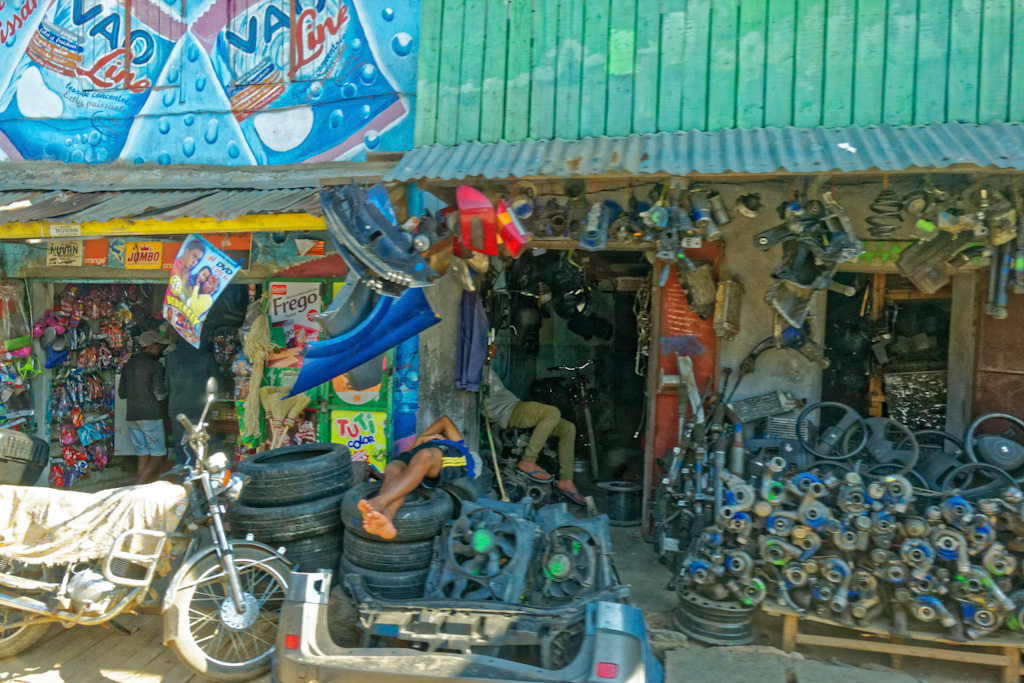
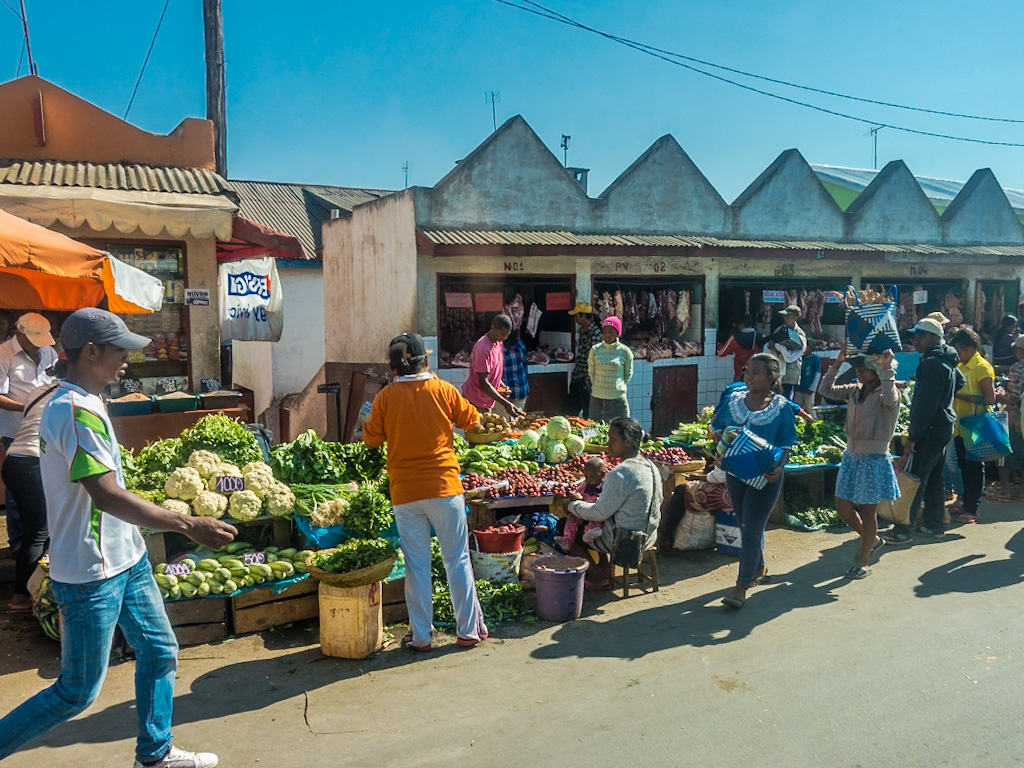
Agriculture is the mainstay of the Malagasy economy. Land is used for the cultivation of rice and other crops, raising of zebu (an Indian form of cattle) and other livestock, the fabrication of bricks and other traditional livelihoods. The CUA (Commune Urbaine d’Antananarivo) is divided into six numbered arrondissements. Since the 2009 political crisis, in which the former mayor of Antananarivo, Andry Rajoelina, seized power as head of state, the CUA has been administered by the president and de facto mayor. Antananarivo has suffered from debt and mismanagement. The CUA estimated in 2012 that the cost of running the city to international standards would reach US $100 million annually, while annual revenues average around $12 million. In 2008, water was cut off at public pumps and there were regular brownouts of city’s street lights because of unpaid debts to the Jirama public utilities company by the City of Antananarivo. In practical terms, the population of about 3 million people of metropolitan Antananarivo live at a subsistence level, the simplest staples of civilization, brick and mortar shops, are nonexistent, replaced by roadside shacks. Do not expect even the most basic necessities of life in Antananarivo, anything you need including camera equipment must be brought with you or you will have to do without. While Madagascar continues to be a lovely vacation destination, with unique wildlife and scenic destinations, it is mired in corruption and poverty.
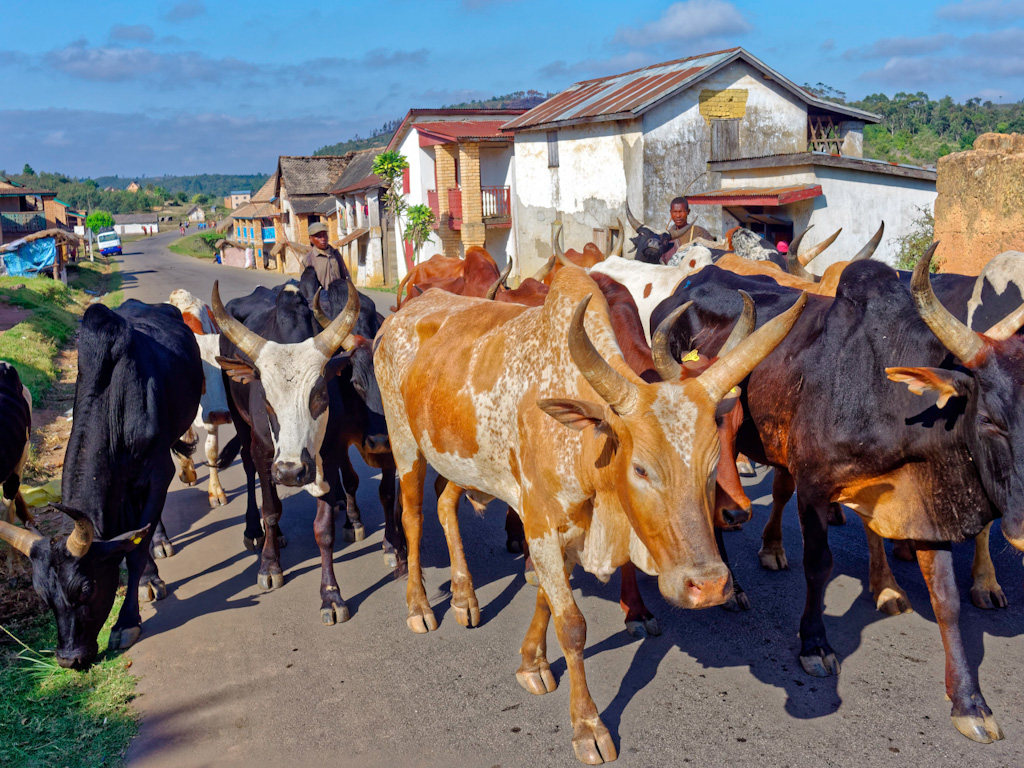
I almost did not write this post, nothing puts the damper on a vacation like the intrusion of local poverty. That said, the Malagasy people are joyful, the hotels were among the most striking and pleasant places I have stayed in and if you are reading this you are planning to go regardless. It is my hope that these details will help you on your travels.

